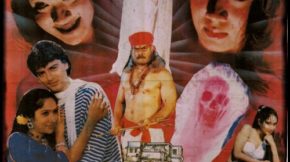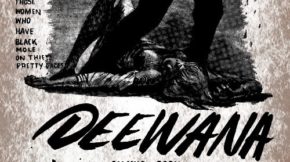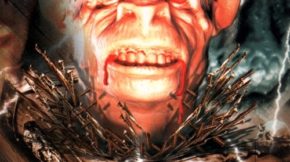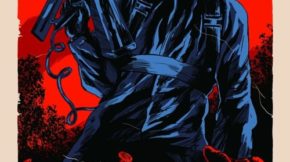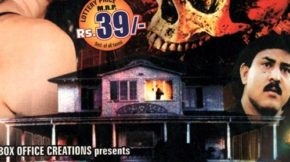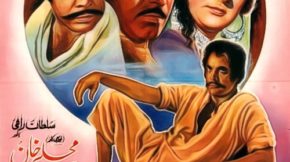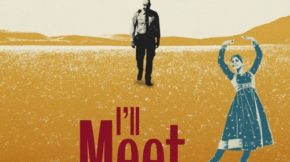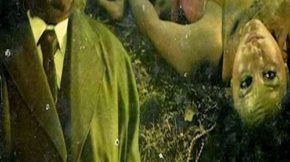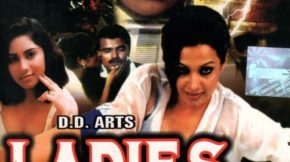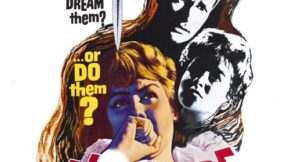The 1980s were a difficult, transitional phase for Bollywood, especially for those weaned on an era of Rajesh Khanna, Gulzar, Hrishikesh Mukherji, S.D and R.D. Burman. Though the parallel scene was thriving, commercial cinema went through a continuous phase of Amitabh Bachchan’s revenge masala movies – increasing in quantity but decreasing significantly in quality as time went by. Then the dreaded Disco Age reached Bollywood like a curse of the “Sprangles of Cataclysm”, descending upon Bollywood like the unrelenting bubonic plague.
Music directors struggled to understand what they perceived as “good disco” music. They started to churn out numbers with signature screeching strings and horns and mind-numbingly monotonous HiNRG style beats. Bappi Lahiri, a dynamic and talented young director from the South via Bengal, was the one who swiped and purged and came up with his catchy little numbers until he had perfected a formula repeated over and over and over with a few bars, notes and sequences changed here and there. Giorgio Moroder’s I Feel Love became the instantly recognised template for the early years of Bollywood Disco and some Boney M and Eruption, with the latter years dominated by Michael Jackson’s Billie Jean style shuffling and shifting beats along with Thriller and the rest.
The Pink Panther theme was the preferred choice for typical Bollywood comedy sequences. Still, an alternative was sometimes found in Hot Popcorn from the early 70s, as in Pataal Bharavi. Melody was crucified and sacrificed for the trendy Disco beats that saw Qurbani’s Aap Jaisa Koi turn into a craze overnight. The Song was produced by a man who knew what he was doing, and he already had the massively successful if inane “Kung Fu Fighting” to his credit. The man taking credit was Biddu, who went on to score some deliciously awful numbers from “The Stud” and “The Bitch”.
The 1970s saw the rise of a figure who could take a bow for the plunging standards of the 80s. The rise of an unprecedented level of loud and brain dead cinema. Along with the most painfully trite and cliché ridden dialogues ever known to Bollywood cinema. Take a bow Kader Khan for having a massive hand to play in the flavour of cinema that emerged in the 1980s. A team of ingredients was at the core of the stunning sequence of films that emerged to symbolise the shambolic 80s. These are Kader Khan, Shakti Kapoor, Bappi Lahiri and Indivar, Padmalaya or other Madras based production houses, and Jeetendra, Sridevi and Jaya Prada. A package deal that was the flavour of the day in the mid to late 80s, and the body of work that they came up with needs to be studied closely to comprehend what happened and why public tastes changed to accept films that were a total suspension of reality. Quite possibly, it is just this mindless escapism that the public, in general, preferred to watch. The question is, why and how?
Pataal Bhairavi starts with Pran, the Maharaja and his royal family presiding over a joust, a fight to the death. Nobody dares to challenge the fearsome, muscular Manek “Teeth” Irani, who may also have been known as “the Indian Jaws” before his untimely death a few years hence. Bristling with typical menace and a very odd scalp appears to be worn like a cap with tufts of hair sprouting from the sides. Pran beckons his effeminate son to take the challenge, but then Jeetendra, aka Ramu, steps in with his sidekick Shakti as an official cheerleader.
A ten-minute long fight ensues with them jostling it out on a net. Irani looks to have the measure of Ramu with his swirling mace, shield and teeth, inches from mauling him with each attempt. Jeetu, aka Ramu, survives by the skin of his teeth and then turns the tables fiercely on his opponent resulting in his being impaled horribly and spectacularly on a set of protruding spikes. Jeetendra wins the day and is rewarded for his bravery and skill by the beautiful, matronly Rajmumari (Jaya Prada).
Later that night, Jeetendra and Shakti watch the Rajkumari and her bevvy of girls performing synchronised swimming in her private swimming pool. The women provide ample proof that you can be fully clothed and look drop-dead gorgeous at the same time while swimming in the sea or swimming pool. This particular song sequence should demonstrate to the current French government that clothes and swimming are perfectly justifiable and recommended.
As the two lovebirds inevitably start to fall for each other’s charms, there is an insurmountable obstacle in the form of the huge Amjad Khan playing an effeminate buffoon determined to marry Jaya Prada. Into the mix is also Kader Khan as the conniving and evil Nepali Jadugar, one trick too many up his scheming sleeve. He and his sidekicks, including Asrani, are determined to sacrifice Ramu to the God Pataal Bhairavi, who will grant them the power to make their wishes come true. So the battle is on to see who will win the Rajkumari’s hand and which of her suitors will survive to tell the tale.
A couple of turgid Disco numbers set to the exact style of the song sequence parodied so brilliantly in “The Dirty Picture”, a film about the late great Silk Smita. The film’s first half is almost entirely comedy sequences typical of the era with Kader Khan eating up the scenery, typically saving the best lines for himself. Silk also makes an item number appearance in this film and is, by far and away, the high moment of this otherwise excruciatingly awful experience.
To watch Amjad Khan playing a semi-retarded and gay imbecile was offensive on more than one level. Firstly to see a great actor reduced to this kind of level was very sad. Secondly, the depiction of an effeminate man as a figure of ridicule was also rather distasteful and unfortunate but expected from a film of this calibre. To watch Dimple Kapadia appear for a cheap item number was beyond expectations. What was she thinking exactly? She has mentioned in interviews subsequently that Pataal Bhairavi was a huge embarrassment and a wake-up call for her to shape up or ship out of Bollywood at that stage of her career.
Jeetendra is comfortable with the imbecilic level of acting required of him, as is the rest of the case, especially Kader Khan, revels in such crap. Bappi Lahiri is on auto mode and churning out long, tedious, screeching disco numbers instantly forgotten the moment they are over. Only the Chumma Chumma number on Dimple by Salma Agha is catchy, though awful. The others are all instantly forgotten, which is mercy in itself.
There are some truly brilliant and memorable moments but far from enough from rescuing this film from turning into the excruciating endurance test that it was. When Kader Khan chops his arm off as a sacrifice, it’s a spectacular scene, and his arm seems wonderfully soggy and pulpy. Later, using a magic herb, the arm is re-attached and as good as new. The terrifying crocodile attack on Jeetendra is also quite inspired.
Later there is a beheading that is quite fun. A few superb fight moves, including Shakti, Jeetendra and Manek Irani all flying and hurtling through the air, suggesting if the Indian selectors were more astute, the Gold Medal count from the future Oh-lumpics ought to be relatively high. Amjad Khan’s turn as a bombshell tranny is also a moment to savour. True that it’s not that difficult to steal the show when the “Show” is as utterly horrendous as Pataal Bhairavi is. Still, it is Silk Smita who smoulders and sizzles as only she can, and in just one item number, steals the show from under everybody’s envious eyes.
Perhaps the breathtaking moment of inspiration was the dancing giant parrots – arguably the most amazing giant dancing parrots in the history of cinema. In summing up, Pataal Bhairavi is unbelievably appalling, strictly for die-hards, geeks and masochists. It is hard to imagine there might be people out there who could pay to watch 150 minutes of Kader Khan scripted comedy, surely not. That said, an alarmingly high percentage of these very films were hugely successful at the Box Office. As mentioned by a reader, Singhasan was to follow soon after, shot almost simultaneously as Pataal Bhairavi with equally astounding results by the same house of excellence; Padmalaya.





